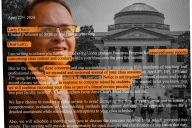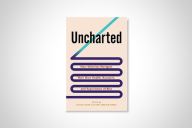You have /5 articles left.
Sign up for a free account or log in.
Boston University
For about six years, Boston University’s Center for Psychiatric Rehabilitation has hosted a one-semester program for college students across the country who are on leaves of absence from their institutions due to mental health conditions. The program offers students lessons on wellness strategies and has helped the center's faculty members better understand the needs of students in crisis or in social and academic ruts.
Taking a leave of absence can be a beneficial experience and an opportunity for students to reset, said Dori Hutchinson, director of services for the center and a clinical professor at the university’s Sargent College of Health and Rehabilitation Sciences. But too often, students who take a leave are abandoned by their college and expected to navigate on their own the decision to leave, the period of time they're not taking classes and the best time and way to return, Hutchinson said. The policies that colleges have in place for leaves of absence are also inconsistent and can alienate students who are facing mental health crises, she said.
“Every college knows the strong connection between mental health and academic success,” said Hutchinson, who has worked at the center for nearly 40 years. “There’s this strong argument for schools to do the best they can with a leave of absence. But many colleges view it as, ‘They’re not here, so we don’t have to worry about them.’”
Last week the center, with support from the Ruderman Family Foundation, a Jewish nonprofit organization in Boston that advocates for the inclusion of people with disabilities, released two guides -- one for students and their families and one for administrators, faculty and staff members -- about best practices for leaves of absence from college. The guides attempt to fill a knowledge gap among students about their options when considering a leave and how to get college officials “on the same page” about how to support students and reduce the stigma around taking leave, including policies that could penalize students with mental health conditions, said Hutchinson, who is a contributing author of the guides.
“These well thought-out, sophisticated guides give students and their families tools to navigate what can be a very difficult process,” Boston University president Robert Brown said in a press release. “We’re grateful to the Ruderman Family Foundation for supporting the development of the guides and proud that as an institution we can play a leadership role in helping those struggling with mental health challenges.”
Although the BU experts, students and foundation officials began work on the guides prior to the coronavirus pandemic, their release comes at an opportune time; college students have reported increases in depression, anxiety and suicidal ideation as a result of the social isolation and uncertainty brought on by pandemic. College administrators have also consistently identified student mental health as one of their top concerns and funding priorities and now say the problems have been exacerbated by the pandemic.
The pandemic prompted new scrutiny of colleges’ voluntary leave of absence policies as students demanded more leniency to accommodate those who did not want to take classes virtually, who faced food or housing insecurity as a result of the economic recession, or who opted to work full-time and take a semester or a year off as their campuses shut down. Students who choose these options sometimes are indirectly penalized by losing guaranteed residential housing, for example, or by being required to begin student loan repayments, even if they intend to return to college.
Jay Ruderman, president of the foundation, said that as campus life returns to full swing, college officials must re-examine how they support students experiencing mental health challenges, including how leave of absence policies sometimes ban students from campus after they experience mental health crises.
Ruderman and Sharon Shapiro, community liaison and trustee for the foundation, were drawn to the work of the Boston University program, which is called NITEO, the Latin word for “bloom” or “thrive,” and helps students who are on leaves of absence. Hutchinson said the program focuses on building students’ resiliency and wellness, including in their relationships, physical and emotional health, self-identity, and academic and career goals so that they can return to college with effective strategies to complete their education.
The foundation also published a white paper in 2018 that analyzed and criticized some of the leave of absence policies of colleges and universities in the Ivy League, which the author said are sometimes used “as a tool for discrimination” against students with mental health disorders. Half of the institutions prohibited students from visiting campus while on leave and included vague incidents of “community disruption” as a reason to order a student to take an involuntary leave of absence, even when a student is not a safety threat to others, according to the paper.
“What drew us to the issue of leaves of absence is the way students were being shunned,” Ruderman said. “You're part of a very prestigious university, but now that you have an issue of mental health, you have to leave the university, you're being cut off from the university. Ultimately, this is an issue of stigma, and universities have been ill equipped to deal with it. Our hope with the guides coming out of BU is that they will be studied by the academic community and adopted in whatever form fits their institution of higher learning.”
The guides, which were partly developed by former NITEO students, recommend that administrators make leave of absence policies consistent for all students, whether for mental health or other reasons. The guides also encourage college leaders to develop support services, such as case management, coaching services or support groups for students transitioning back to college after taking leave. Policies should be “individualized” rather than “blanket” so they can be adjusted based on specific students’ needs, the guide says.
The guide for students offers a series of checklists and considerations before deciding to take a leave of absence, and tips for how to communicate the decision to their parents and friends. Hutchinson said the guides rely on the input of students who have gone through the process themselves, such as David Mink, a student at Monroe Community College in upstate New York. He's a NITEO alumnus who now interns for the program.
Mink attended Macalester College in Minnesota after graduating high school in 2015 and by spring in his first year was suffering with anxiety and depression that made going to classes and doing course work difficult. He struggled to acknowledge his mental health challenges and stalled seeking help. Mink “bounced in and out” of classes at Monroe for several years, his mental health spiraling, until he enrolled in the NITEO program in 2019.
“I hadn’t realized and come to terms with the fact that I had anxiety and depression,” Mink said. “What I had in mind for what anxious people were and what depressed people were didn’t fit with how I viewed myself. I didn’t really know how to change direction,” he said, adding that the NITEO program “was the change of direction that I needed.”
The most challenging part of taking leave was that Mink felt alone in his decision and like he had failed. By sharing resources, such as the guidelines for students considering or taking leaves of absence, college officials provide students a road map to follow, rather than leaving them to deal with the process on their own, Mink said.
“The manual is a good starting point for administrators and faculty,” he said. “If some parts of it aren’t as applicable to that college, then that’s fine -- sideline them in favor of other parts of the manual. There’s never going to be an exact rule book. It’s just about finding the advice that works and making advice work for you.”








